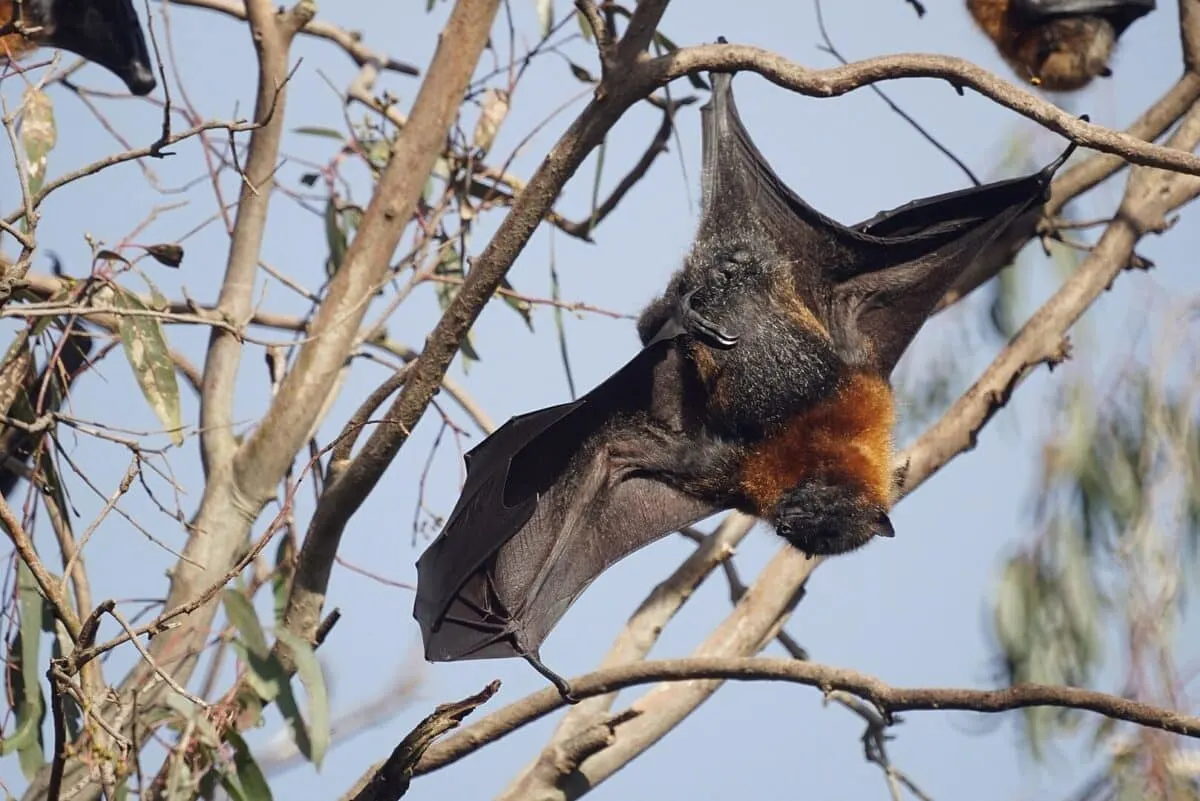Fruit bats are mammals that can fly and are the only bats that eat fruit. The majority of fruit bats reside in Southeast Asia and Africa. Their scientific name is “Pteropodidae,” but they are also often referred to as flying foxes.
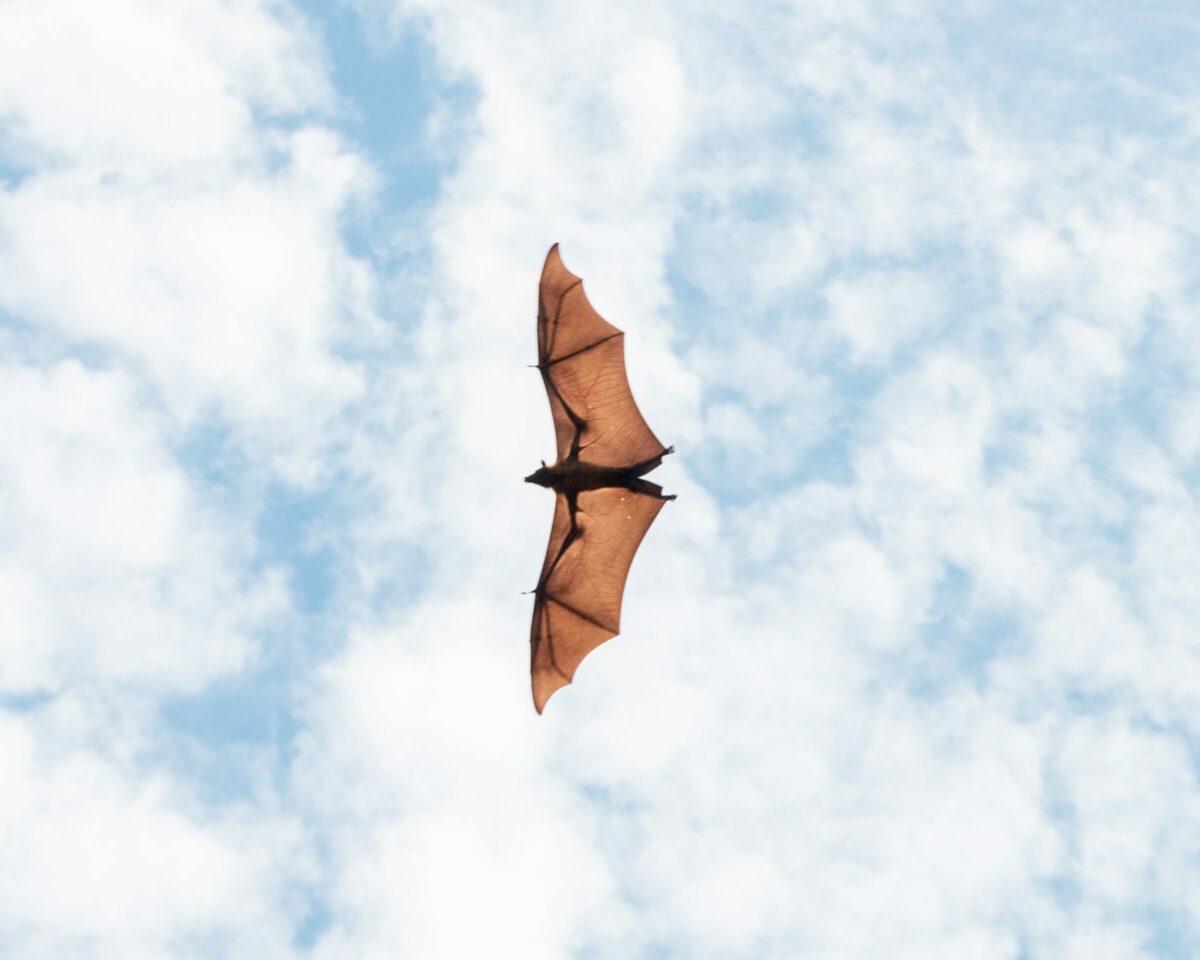
They spend much of their time hanging upside down in trees or caves with other members of the same species. The Pteropodidae family has 170 species with 41 different genera. As one would guess, they are named fruit bats because they eat fruits or parts of plants.
Let’s get to know them!
Interesting Facts About the Fruit Bat
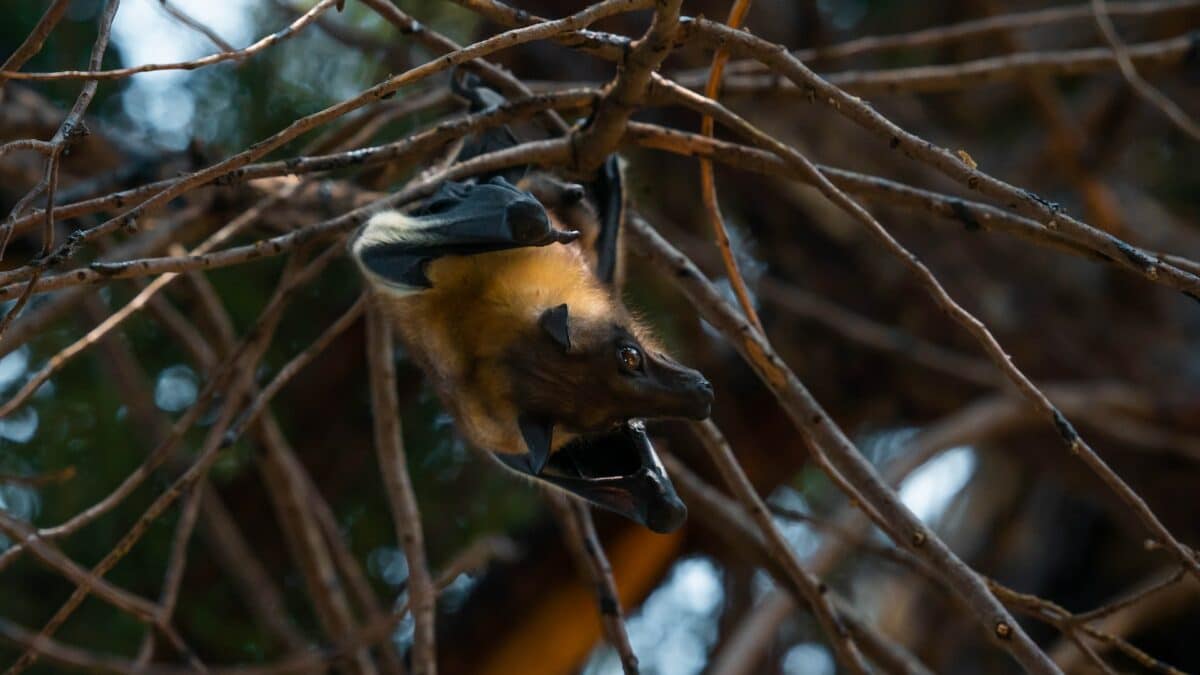
One of the interesting facts about the bat is that it is a talented flyer and the only mammal to have the full capacity for flight. Also, these tend to incubate viruses and other diseases.
The fossil record of the fruit bat and its genetic analysis indicate that they evolved more than 30 million years ago. This bat species plays a significant role in dispersing undigested seeds or pollen in the surroundings and is essential to the ecosystems they inhabit.
Because of fruit bats, some plants have adaptations to ensure that their seeds are dispersed in the surroundings by these fruit-loving creatures. Also, they make the best example of symbiotic relationships.
Pteropodidae is their scientific name, derived from the Latin words that mean “wing foot.” The family of fruit bats is known as megabats, old-world bats, and flying foxes.
Various Types of Fruit Bats
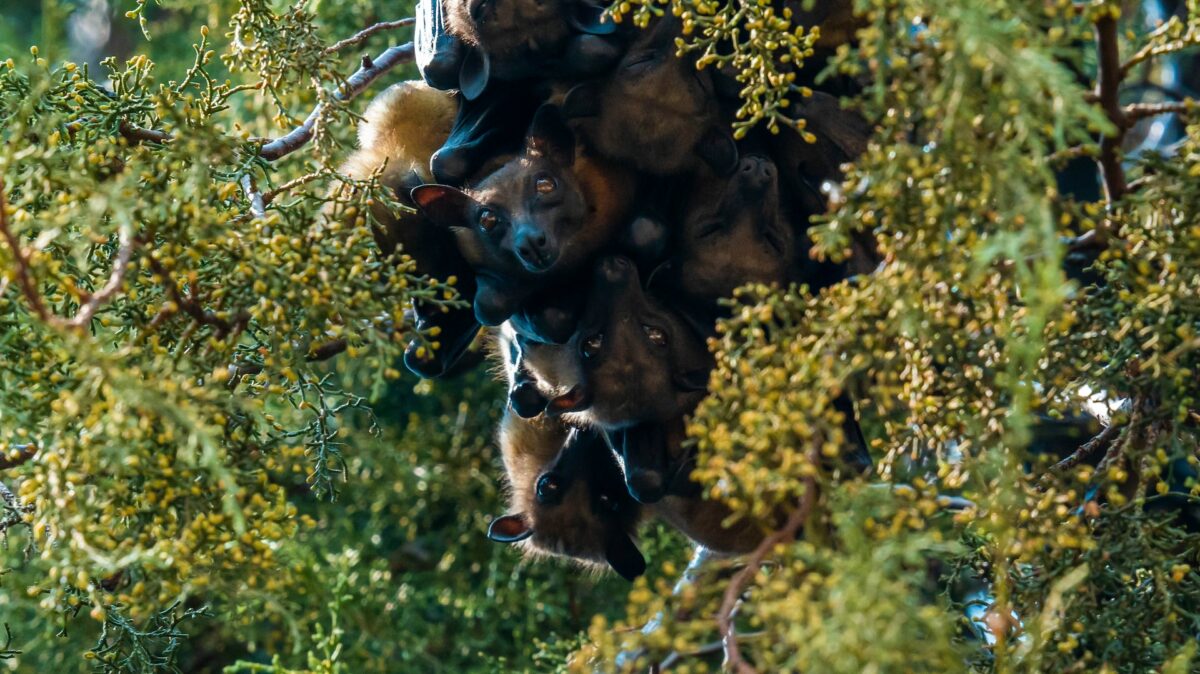
Fruit bats come in various types. The genus Pteropus contains about 59 species. Let’s take a closer look at a few of them!
#1 Large Flying Fox
Commonly known as the Malaysian flying fox or the large fruit bat, this species is found in the southeast Asian islands, including Malaysia, Indonesia, and the Philippines. They feed on flowers, fruit, and nectar.
#2 Rodrigues Flying Fox
Found on the tiny island of Rodrigues in the Indian Ocean, this species weighs around 12 ounces and measures about 35 inches in its wingspan. They are fond of eating mangoes, tamarinds, figs, and fruits.
#3 Gray-Headed Flying Fox
The gray-headed flying fox is the largest species in Australia and is native to the continent. They measure over 2 pounds in weight, and their wingspan spreads to over 3 feet. This species feeds on native fruits and nectar.
#4 Mariana Fruit Bat
Found in the South Pacific Ocean on the Mariana Islands, these species are considered medium-sized bats since they weigh 0.5 to 1 pound, and their wingspans measure from 25 to 28 inches.
#5 Giant Golden-Crowned Flying Fox
Famously referred to as the golden-capped fruit bat, this flying fox species is endangered and resides in the Philippines. This species weighs over 3 pounds with a wingspan of 5.6 feet, making it one of the heaviest bats out there.
Appearance
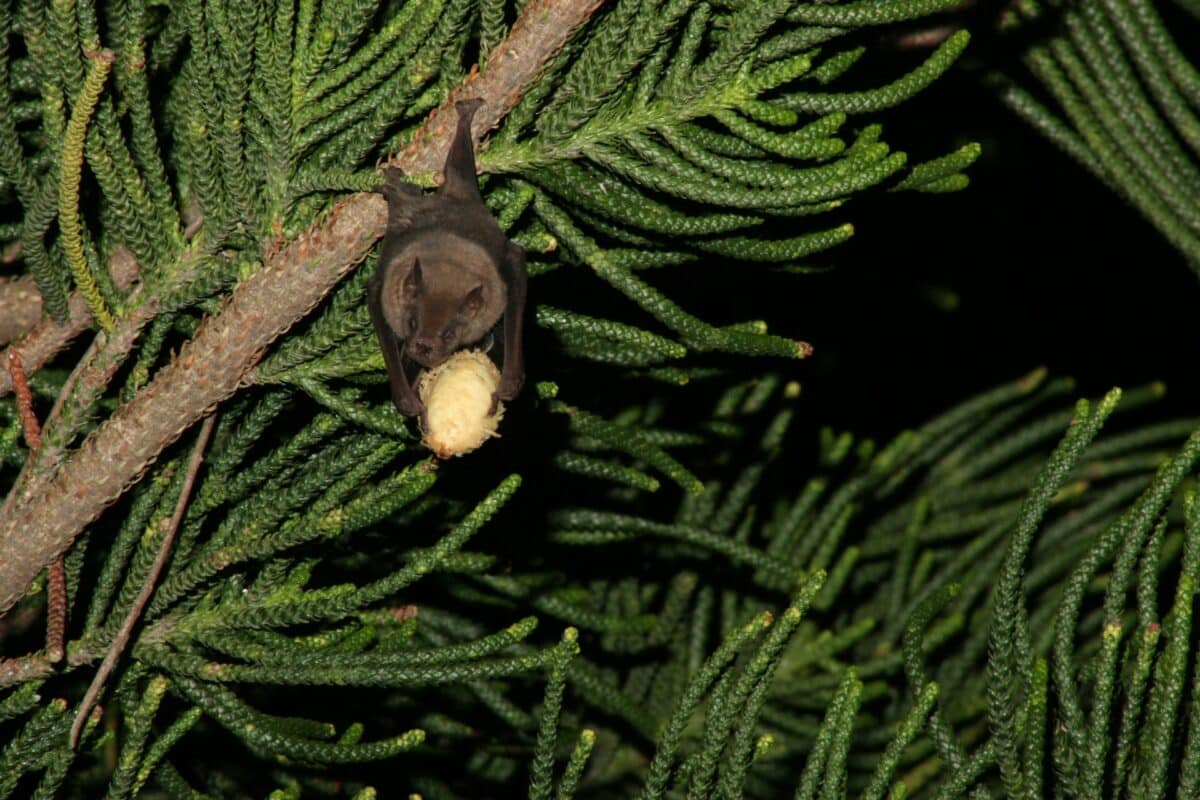
The bat is the only mammal that can take full flight and contain the hallmarks of mammalian ancestry. These include a thick coat of fur and the ability to produce milk; their wing membranes have extended flans of skin.
Also, they have large eyes, a canine-like face, simple erect ears, and upper and lower canine teeth. Moreover, they have a prominent rostrum. One example is the tube-nosed fruit, which has tube-shaped nostrils from the snout. There are also hammer-headed bats with large blunt snouts with hammer-shaped noses.
The bats named Franquest and Buettikofer have scent glands and reside in Africa. The unique feature of this bat is the presence of small white tufts on its shoulders for social purposes.
Size
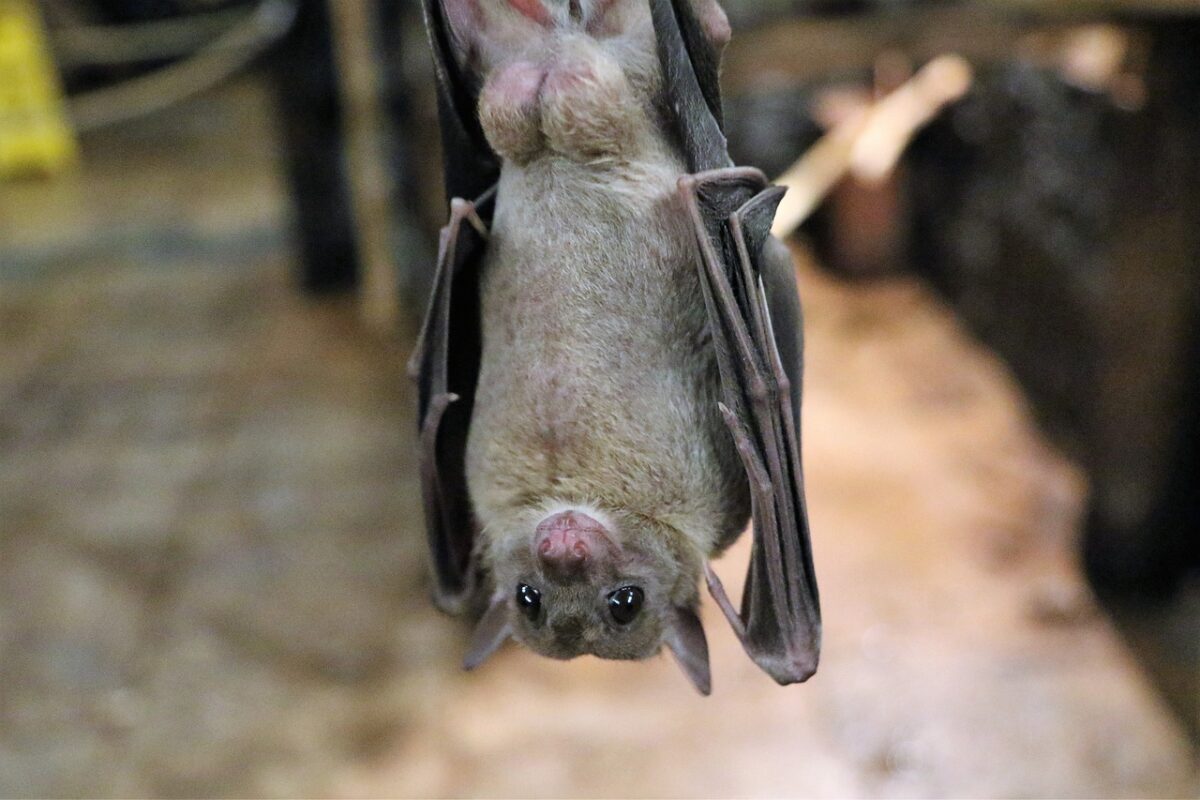
One more exciting feature of the fruit bat is its large size. Some species of bats are a few inches from head to tail. Meanwhile, fruit bats are the most significant bats in the world. On average, their wingspan is about 5.5 feet, roughly the height of an adult person.
Moreover, the shape of the wings is like the body shape. The small bats can easily maneuver during flight and quickly fly under canopies. Large fruit bats have narrower and longer wings that enable them to fly for a long time over a long distance.
The size of the male is larger than the females, and the female has a fox-like appearance.
Behavior
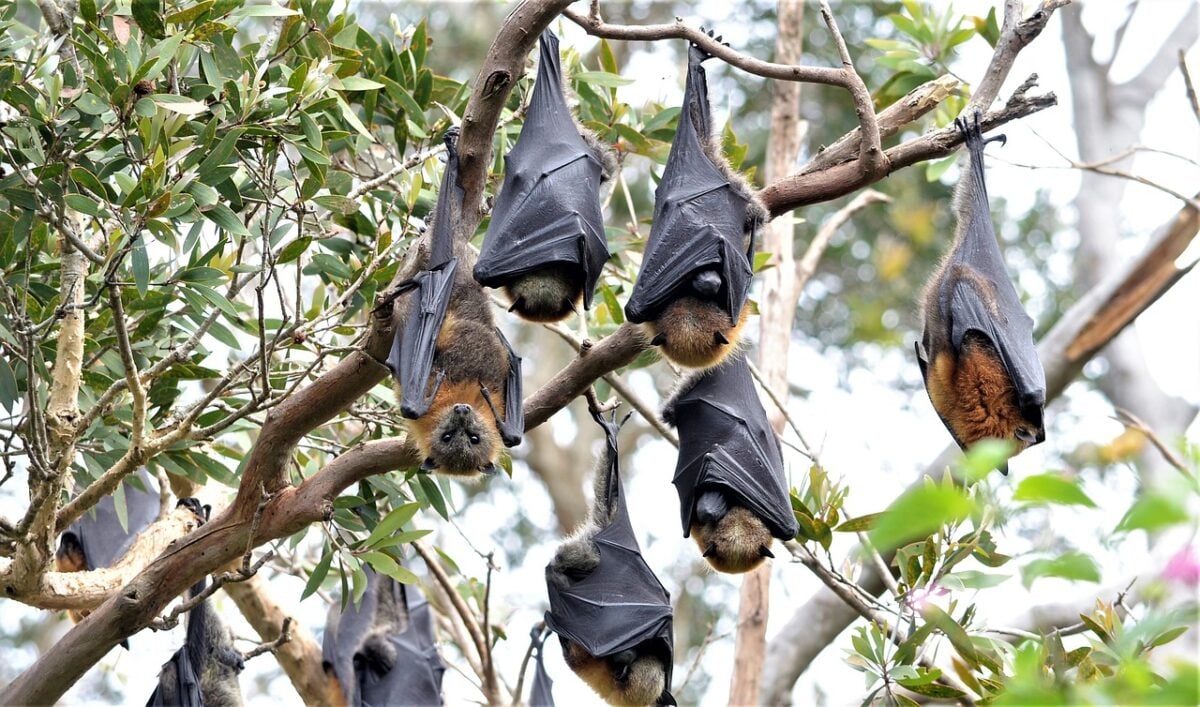
Most fruit bat species are nocturnal; they come out at night between dusk and dawn. However, some feed during the day. Nocturnal bats have the advantage of facing way fewer predators while hunting for food.
Fruit bats are unique from other species. For example, different species rely on a sense of vision or smell and echolocation, the sonar system, to perceive the world around them. Some species can simulate a crude form of solar by clicking the tongue.
Social in nature, these flying mammals usually stay in groups and move like a family. They live in large groups, sometimes reaching up to 200,000 individuals. The size of the group varies according to the local food supply, and when the quantity of food is enough, they move or congregate in large numbers.
They create a cacophony of sounds and noises like bleats, squeaking, and trills. Egyptian fruit bats can learn from other members and change their vocalizations that arise due to the local dialect type.
Migration
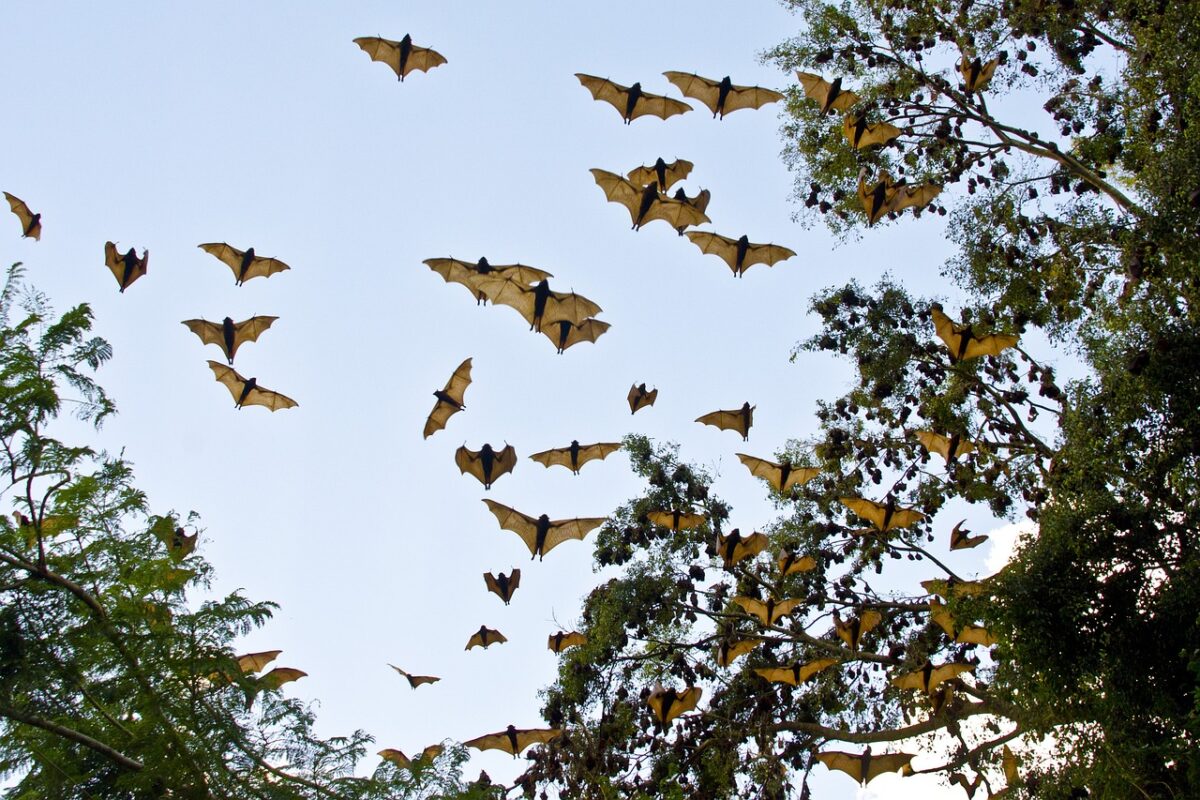
Fruit bats migrate according to changes in season. If there are a lot of seasonal rains, they move to other areas, but if the showers are few, these animals stay on the same rooting sites.
Habitat
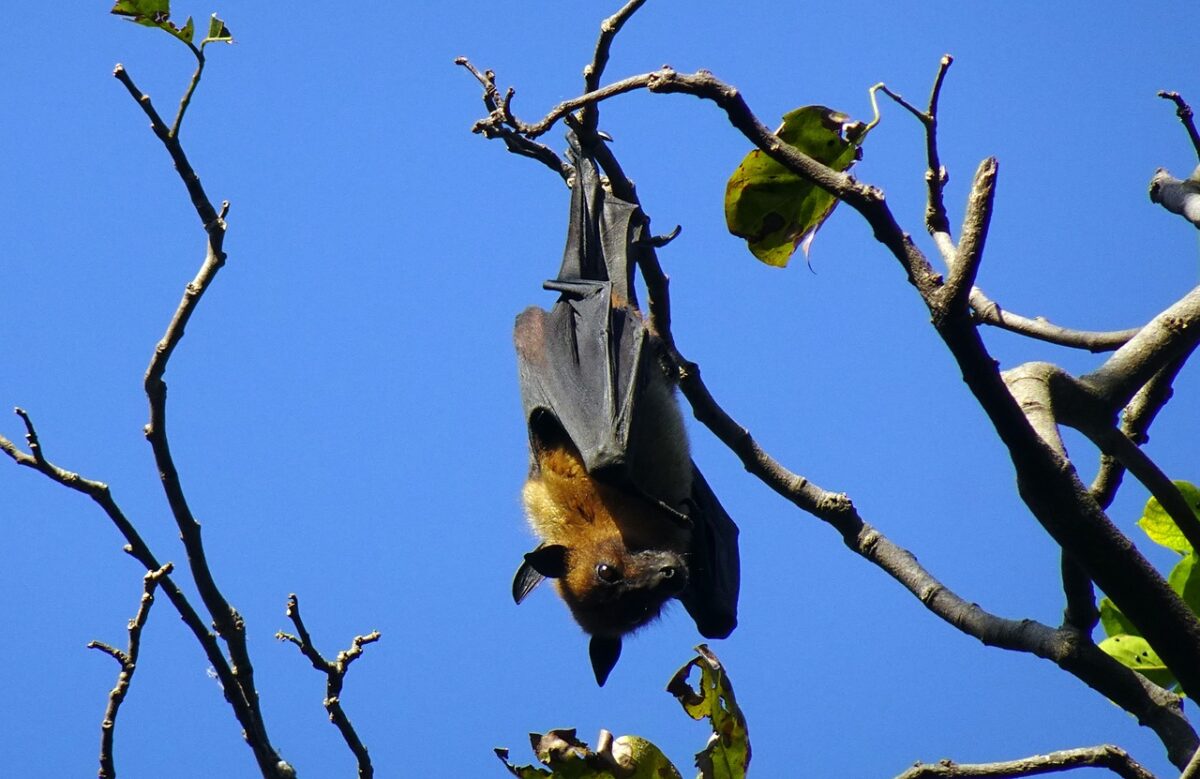
These mammals are present in the subtropical or tropical forests or savannas of the Eastern Hemisphere that span between the Australian and Eastern Mediterranean territories.
More than half of fruit bats live in trees, while others roost in rocks, bushes, caves, and buildings. They can stay there for decades without altering their position or location if undisturbed.
Threats and Predators
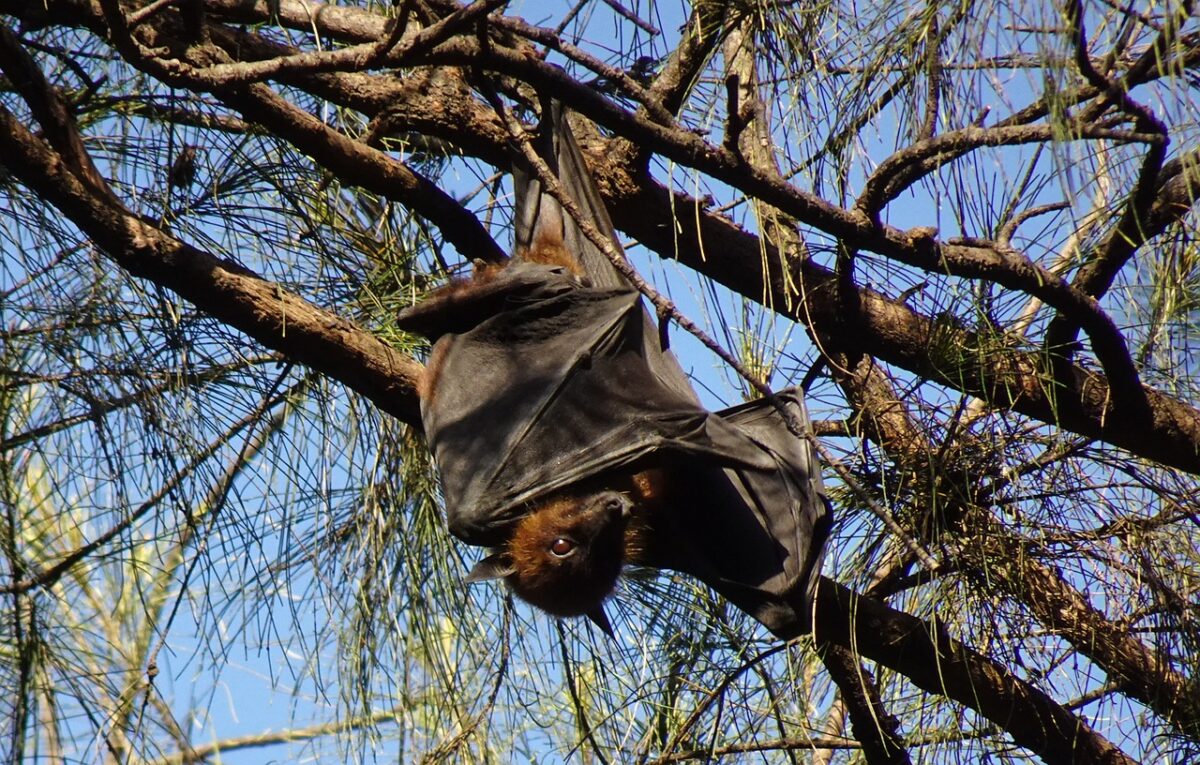
Fruit bats are threatened by natural predators, which may lead them to lose their habitat. Predators like snakes, owls, or eagles may destroy their roosting sites and food sources. Also, farmers are a significant threat to them. They shoot or give poison to bats to prevent them from raiding crops and overhunting their crops.
Moreover, habitat degradation due to climate change threatens fruit bats. Heavy snow, high-power winds, and excessive heat are all threats to the flying bat.
The most prominent predators include snakes, birds of prey, lizards, carnivorous mammals, and human beings.
Diet
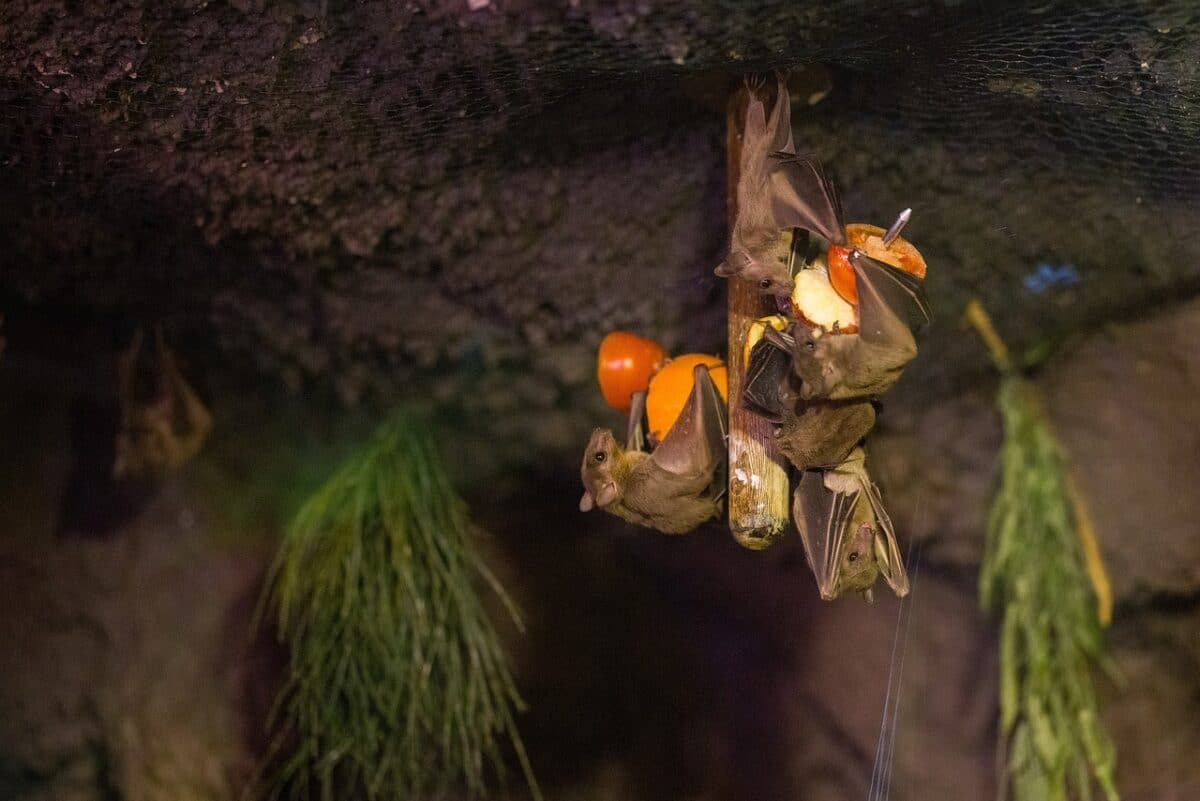
Fruit bats are herbivorous and are dependent on flowering plants for survival. They spend their time hunting for food and selecting pollen, nectar, and fruits.
Each species relies on different plants depending on their availability in the particular environment where they live. Some species are intertwined in the local flora, so they adapt and feed on specific fruit.
Fruit bats love fruit! They enjoy most fruits, including figs, bananas, dates, mangoes avocadoes, and guava. When humans eat fruit, they take a bite, chew, and swallow it – but fruit bats are a little different. They use their needle-sharp teeth to take a bite of fruit, then they squish it against the roof of their mouth to get all the juice out of it. When they are done, they just spit out the rest.
Senses
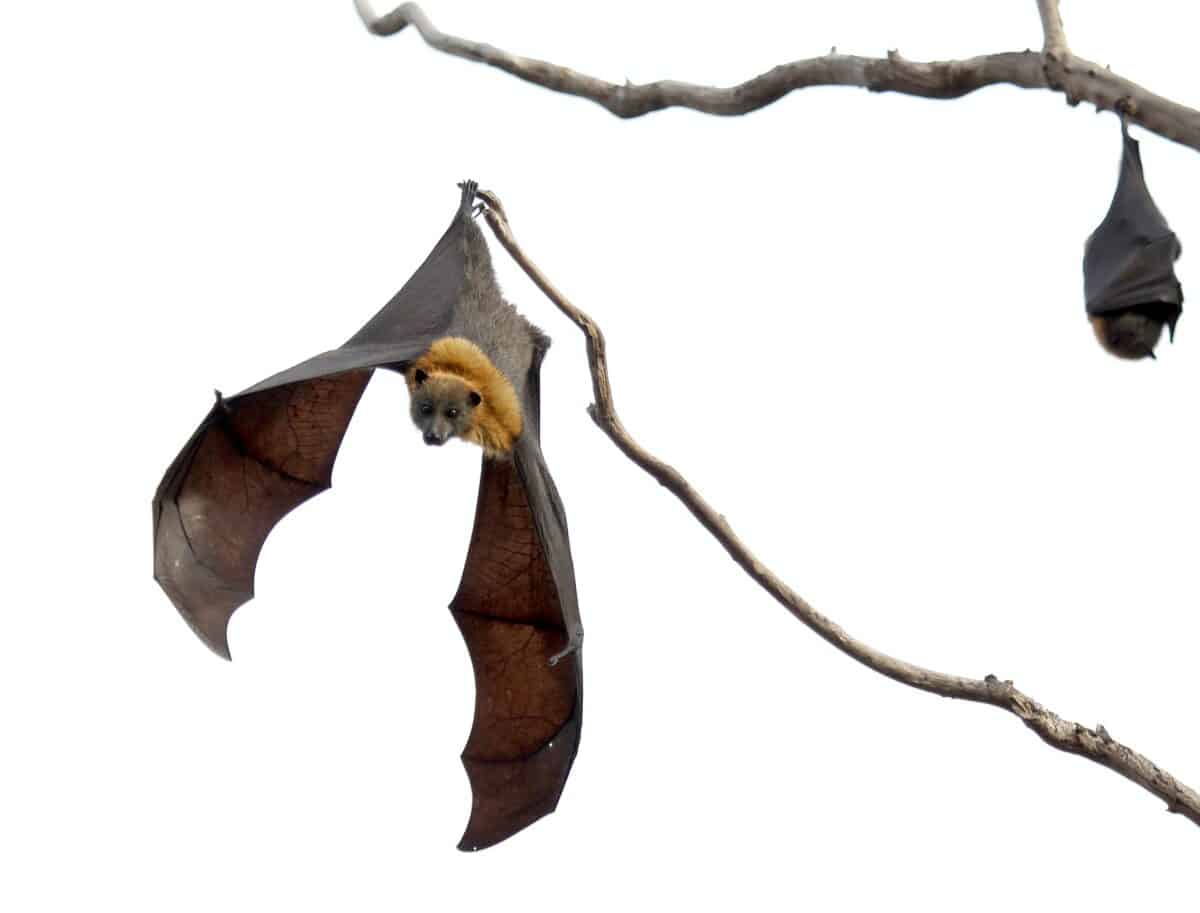
Fruit bats have excellent eyesight, and they are superb sniffers. They can smell fruits and food even though they are over 3 miles away. Bats can “see” in the dark; this is a special skill called echolocation. They can detect the distance of various objects with the help of sound waves bouncing back to them. This entails making a noise and then waiting for the echo when sound waves bounce back off objects; if they don’t bounce back, they can safely fly forward, even in the dark.
Reproduction and Life Cycle of the Fruit Bat
These animals are mammals, so they have a reproductive cycle like other mammals. However, their reproductive behavior is unclear and varies from one species to another. Some of the fruit bats are polygamous, while others are monogamous.
Polygon is another mating strategy that these bats practice. It means forming a large group consisting of many females and a single male. In contrast, males gather in bachelor groups, attracting females with different wing-flapping qualities and vocalization features.
Some fruit bats mate once a year, while others have two reproductive seasons – one during the dry season and one during the wet season. On becoming pregnant, the female engages in groups where they stay to get grooming and care.
The gestation time of the fruit bat female lasts for four to six months, and the mother can delay embryo development according to the condition of the environment and the dietary requirements needed to support the young bat. If the conditions are favorable, then it will give birth and start lactating to provide for the baby. The fruit bat only gives birth to a single bat, rarely having multiple babies.
Also, the young pups of the fruit bat stay with the mother as it takes care of the baby. The fruit bat mother gives them milk and protection. After two years, the offspring reaches sexual maturity. In favorable environments and wild places, they may live for as long as 30 years.
Fruit Bat Population
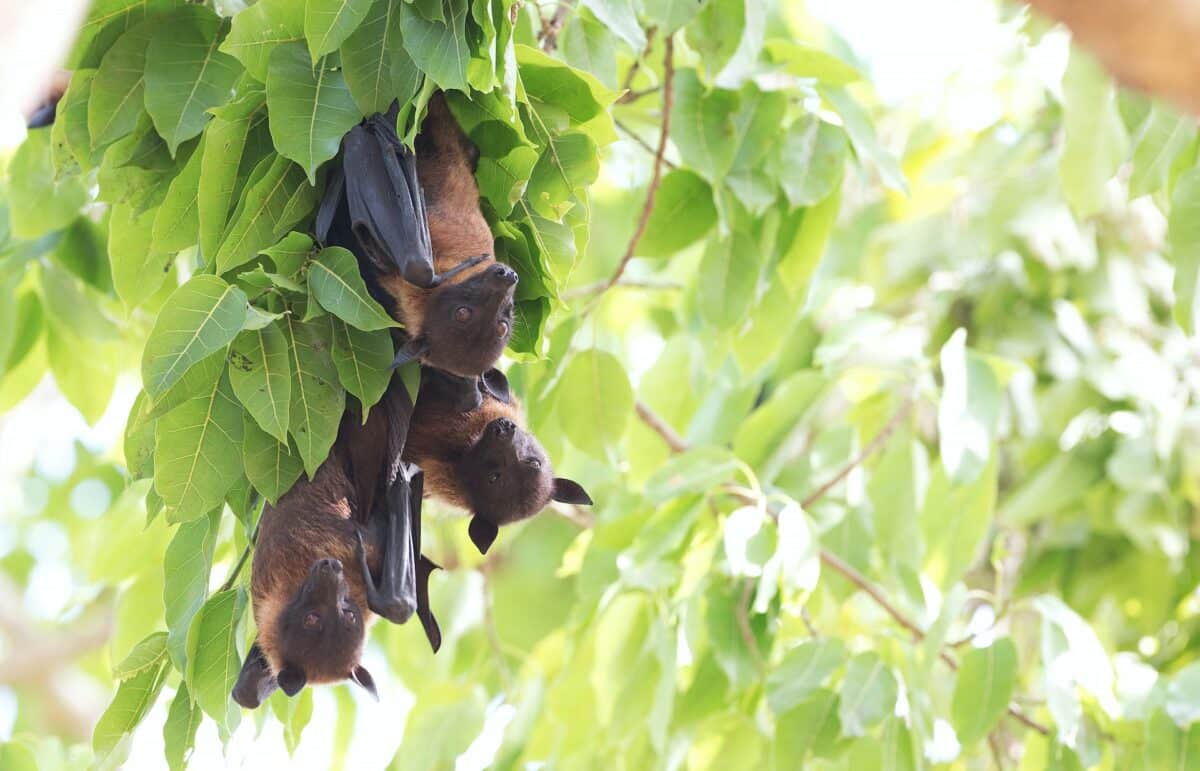
Many fruit bat species exist today; the number is substantial and uncountable. They are distributed widely in Asia and Africa. However, the IUCN Red List indicates that about half of species are threatened and listed as endangered. Moreover, half of the species are safe but should be protected from threats that could potentially make them endangered.
One of the biggest threats that they face is the loss or destruction of habitat. Urbanization and deforestation are two important aspects that have resulted in habitat loss. Moreover, hunting is also a significant problem that causes threats to the lives of fruit bats.
The purpose of hunting fruit bats is for traditional medicines and food. In some parts of the world, people believe that fruit bats help cure different illnesses. Therefore, hunters kill these mammals to make medicines. Fruit bats are also at risk of getting diseases from humans. For example, the Hendra virus can kill both humans and these bats.
Are Fruit Bats a Threat to Humans?
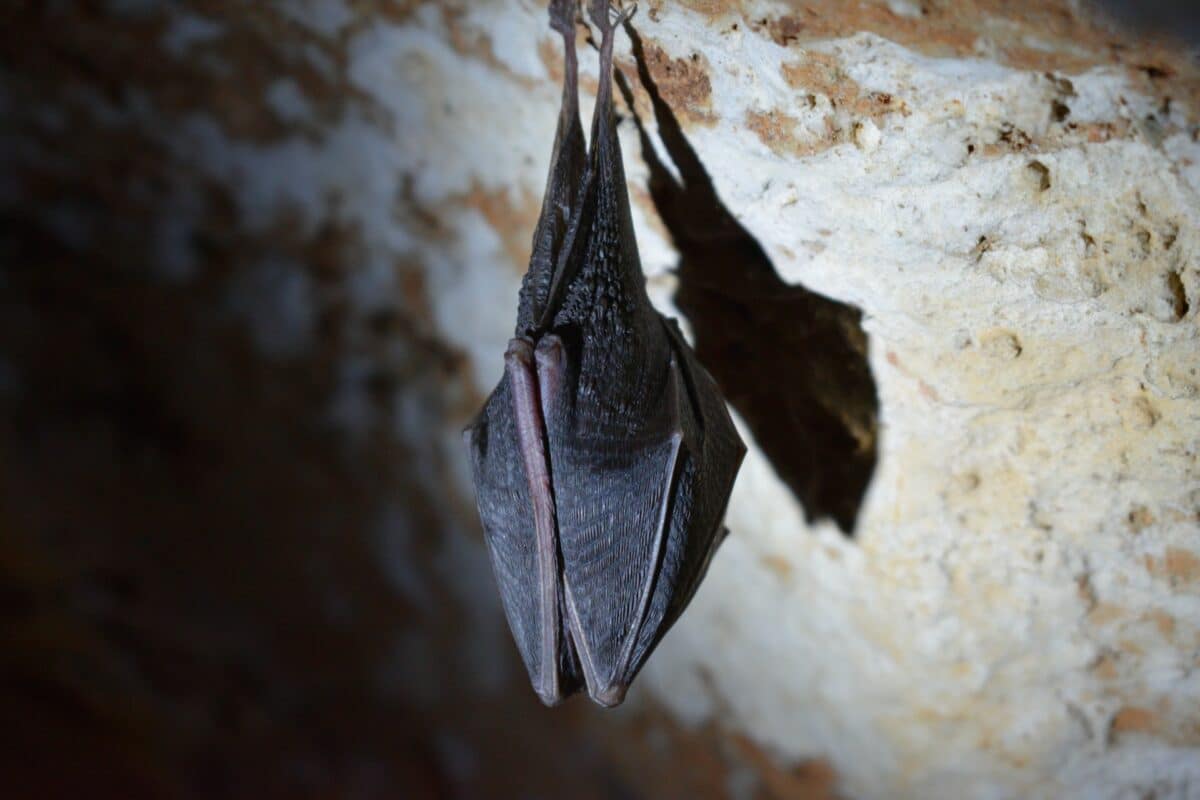
The fruit bats do not threaten humans because they are herbivores and eat fruit or vegetables. Their beaks are not sharp enough to cause injury to humans. If disturbed, though, they could go to attack, and their claws may cause scratches on a person’s skin.
They are only a significant threat to humans if they are sick or have a viral infection that they can pass on. Bats are frequently the cause of the spread of various viral infections, such as the Ebola virus.
Frequently Asked Questions
Belonging to the scientific group called Megabats, blossom bats, and flying foxes, commonly referred to as fruit bats, they enjoy feeding on flowers, fruit, and nectar. They get the name flying foxes because of their appearance; their head resembles that of a fox.
Yes, fruit bats are intelligent creatures; their intelligence level can be compared to that of horses and dolphins. Consequently, enrichment is of utmost importance for bats in captivity.
Bats carry deadly viruses such as rabies, so it is better to avoid any physical contact. Rabies is a kind of virus that affects the nervous system in animals and humans. A person can be exposed to this disease by a scratch, saliva, or bite of an infected animal.
Bottom Line
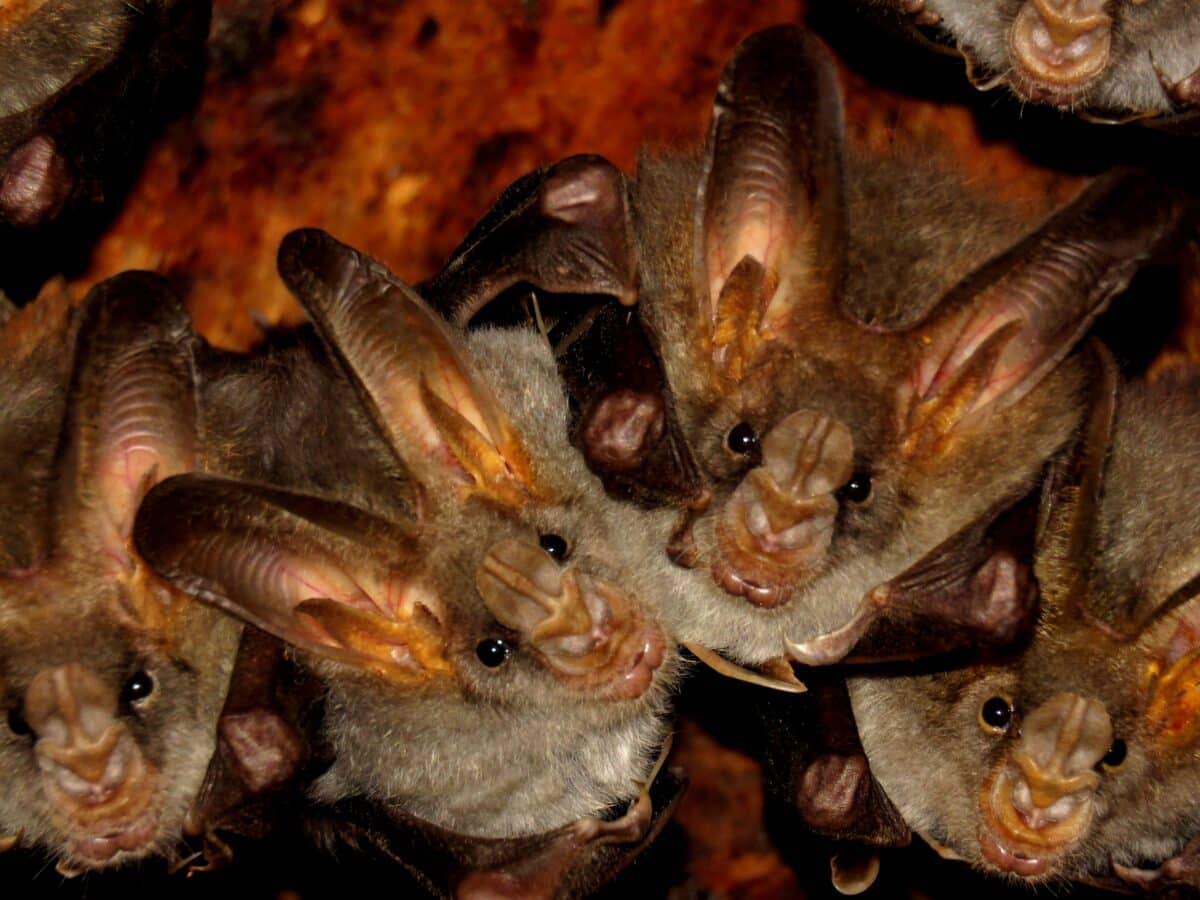
| Key Points |
| 1. Fruit bats are found in Australia, Asia, and European forests. |
| 2. Fruit bats eat various fruits and nectar of flowers. |
| 3. They usually measure about 2.5 to 10 inches. |
| 4. Fruit bats have wingspans that measure as long as 5.5 feet |
| 5. Fruit bats risk endangerment because of hunting and climate change. |
| 6. Fruit bats are not typically a threat to humans, except for their ability of spreading viral infections. |
Fruit bats, also known as megabats, are large mammals with large wings and the only mammals that can fly. These flying mammals are herbivores and eat fruit pulp and flower nectar. Also, they reproduce by giving birth to live babies. The male bats are large compared to female bats. These creatures are only harmful to humans if they are sick or if anyone annoys them.
They are frequently hunted to be used in indigenous medicine. Along with climate change and loss of habitat, this poses the biggest risk to the species and may eventually lead to their endangerment and extinction.
Thank you for reading this article! If you’re still curious for more knowledge on these flying mammals, read our post on the 18 Cutest Bat Species Around the Globe.
Join our Forum for free today!


